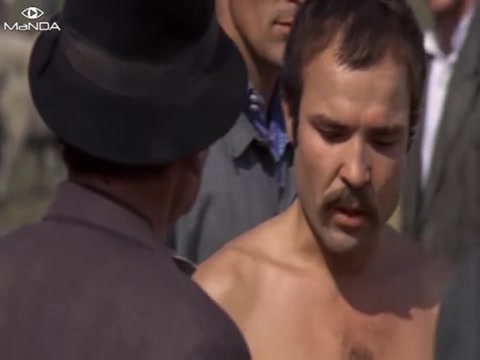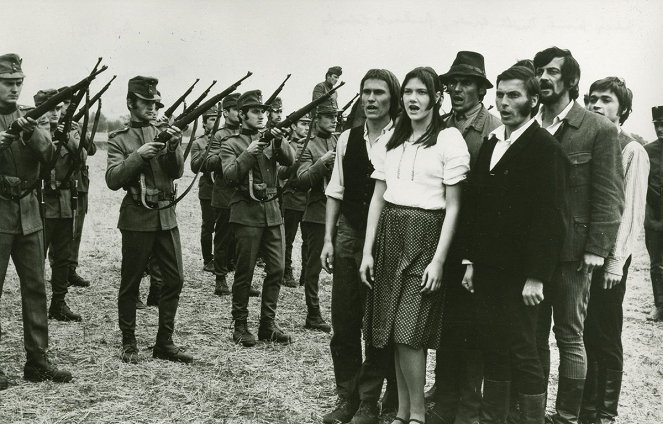Directed by:
Miklós JancsóScreenplay:
Gyula HernádiCinematography:
János KendeComposer:
Tamás CsehCast:
Andrea Drahota, Gyöngyi Bürös, Erzsi Cserhalmi, Mari Csomós, Ilona Gurnik, Éva Spányik, Zsuzsa Ferdinándy, József Madaras, Lajos Balázsovits, Tibor Orbán (more)Plots(1)
The film, which has a structure like a passion play, honours the agrarian Socialist movements of the end of the last century, at the same time conveying a historical philosophical critique of the Socialist ideas. Stylised dance with collective choreography depicts the fight of those answering terror with violence: the fight between oppressors and the downtrodden. Harvesters are going on strike. The bailiff puts fire on the wheat sacks to intimidate them. In response he gets killed, while the arriving soldiers are disarmed by naked girls, the arms are burnt and the church is put on fire, too. The traitors take an oath anew. One of them dies of the knife of the minstrel. The new-come armed units conquer the harvesters in gunfire. (official distributor synopsis)
(more)Videos (1)
Reviews (3)
The most emptiness-filled movie I've ever seen. The ideas are obvious, but their message in the form of a non-narrative rambling through all the plans of the mise-en-scène is so tediously monotonous and uninteresting that even the wave of idealistic dialogues cannot be appreciated with interest and engagement. Perhaps a more exciting experience for me would have been to sit in on a conversation between a couple of elderly women recommending to each other doctors and pills for stomach ulcers.
()
The cut between shots disappears, taking with it the barriers between classes - from now on, the world is once again what it has always been: the only social field, the only stage without internal boundaries, the only stage of history and film, in which the constant rearrangement of elements through the medium of power and the camera moves the movement of the plot forward regardless of individual consciousness, but only according to the logic of purely relational pushing by historical actors for hegemony within the political space. The actors are collective subjects of classes, the driving force behind the struggle for power and emancipation, the method of exposition: mise-en-scène. When the proletariat and the bourgeoisie confront each other face to face, there will be no more artificial power-ideological boundaries to separate them - the violence arising from the desire of oppressors to guard their place and determine the place of the oppressed will be revealed in all its undisguised repugnance. It is at this very moment that a new medium arrives: the camera, to elevate the movement stemming from this violence into a movement usable for dance and capture this revolutionary Csárdás, given by the utopia of the non-place. The dance of the masses must be accompanied by music, and it is in this collective ancient ritual that the historical actors find strength for action.
()
Although the plot is important in this film, the lyrical aspect prevails, where images and music beautifully intertwine, sometimes too familiar, but still new in the Hungarian presentation. Historically interesting film, where the delivery definitely takes the lead, being specific, beautifully magical, and still accessible to the audience.
()



Ads